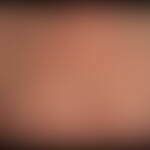Synonym(s)
ultraviolet rays; UVA rays; UVB rays; UVC radiation; UV light; UV radiation
DefinitionThis section has been translated automatically.
Electromagnetic, strongly ionising radiation invisible to the human eye with wavelengths of about 30-400 nm. UV rays follow on from the high-energy (violet) end of visible light. From approx. 30 nm onwards they enter the range of X-rays. Along with visible light and infrared radiation, they belong to the group of optical radiation because they can be refracted, reflected, transmitted, absorbed and/or diffracted. Only about 7% of the total radiation energy of the sun reaches the earth's surface. The atmosphere primarily absorbs short- and medium-wave UVC and UVB radiation.
ClassificationThis section has been translated automatically.
- The ultraviolet spectrum comprises wavelengths from 1 nm to 380 nm. The energy of an ultraviolet light quantum is in the range of approx. 3.3 eV (380 nm) to approx. 1000 eV (1 nm).
- The radiation in the ultraviolet range is divided into:
- UVA (also black light or blacklight; 400-315 nm; 3.10-3.87 eV)
- UVA-1 (denotes the long-wave range of UVA radiation); 340-400 nm
- UVB (also Dorno radiation; 315-280 nm; 3.87-4.43 eV)
- UVC ( 280-100 nm; 4.43-6.20 eV)
- Far UV, vacuum radiation (also FUV, VUV; 200-10 nm; 6.20-124 eV)
- Extreme UV (also EUV, XUV; 31-1 nm; 40-1240 eV)
You might also be interested in
General informationThis section has been translated automatically.
UVA rays
- UVA rays cause direct pigmentation, which is caused by photooxidation of colourless melanin precursors and by rearrangement of melanosomes in melanocytes (within 5-10 minutes; duration: 3-8 hours).
- UVA-2 rays are located in the range between the UVB and UVA1 spectrum and cause skin phenomena typical of either the UVA or UVB spectrum.
- UVA-1 rays are part of all natural or artificial light or UV radiation sources and are not absorbed by uncolored glass. In contrast to UVB, UVA radiation does not cause the skin to build up a light callosity, so it probably offers no (or only little) sun protection (even if the tan has built up) and does not leave any visible damage. Therefore, their effects will remain unnoticed for a long time. It is undisputed, however, that long-term and intensive UVA irradiation endangers the skin.
- Pathological reactions, preferably triggered by UVA radiation, are:
- Light dermatoses especially the polymorphic light dermatosis
- premature skin aging (see also light aging) and wrinkle formation
- and, to a lesser extent compared to UVB, an increased risk of skin cancer (see below photocarcinogenesis; see below malignant melanoma).
- UVB radiation causes acute skin damage such as dermatitis solaris, indirect pigmentation, the photosynthesis of vitamin D, the formation of a light callosity as an effective light protection, as well as basal cell carcinomas and spinocellular carcinomas and their precursors. UVB is also significantly involved in photocarcinogenesis.
- UVC rays (the most energetic rays of the UV spectrum) are almost completely filtered out of sunlight, primarily by the ozone layer in the stratosphere (UVC rays in the 100-200 nm range can be absorbed by oxygen or nitrogen molecules, and in the 200-300 nm range by ozone). Penetrating residual radiation causes especially conjunctivitis photoelectrica and keratoconjunctivitis photoelectrica. Increased occurrence in the high mountains (snow blindness) as well as in case of arc glare. Extremely dangerous for contact lens wearers.
Caution! UVC rays are released during welding and cutting.
Note(s)This section has been translated automatically.
The sunlight reaching the earth contains only UVA and UVB in addition to visible light and infrared. UVC is completely absorbed in the stratosphere (atmosphere) by ozone. The intensity of UV radiation changes depending on the time of year and day, cloud cover, the ozone layer and geographical location. For example, it increases by about 20% every 1000 metres. Scattered rays e.g. on the water surface or in the snow also increase the intensity of UV radiation. On islands it is particularly intense because of the low-suspended air (see below light protection).
LiteratureThis section has been translated automatically.
- Al Mahroos M et al (2002) Effect of sunscreen application on UV-induced thymine dimers. Arch Dermatol 138: 1480-1485
- Brem R et al (2010) DNA breakage and cell cycle checkpoint abrogation induced by a therapeutic thiopurine and UVA radiation. Oncogene 29:3953-3963
- Esser C et al (2010) UV rays and pigmentation. dermatologist 61:561-566
- Hadshiew IM et al (2002) Photoprotective mechanisms of human skin. Modulation by oligonucleotides. dermatologist 53: 167-173
- Krins A et al (1999) Measurement and evaluation of natural and artificial UV radiation. dermatologist 50: 701-705
- Schindl A et al (2001) Reciprocity regulation in photobiology. An overview. dermatologist 52: 779-785
- Schoppelrey HP, Breit R (1999) UV-therapy in HIV-infected patients. dermatologist 50: 643-648
TablesThis section has been translated automatically.
| Area | Abbreviation | Wavelength | Penetration depth into the skin | Erythema effectiveness | Carcinogenicity |
| Short wave UV light | UVC | 100-280 nm | < 50 μm (usually completely absorbed by the epidermis) | +++ | +++ |
| Medium wave UV light | UVB | 280-320 nm | 50-100 μm (epidermis or stratum papillare) | ++ | ++ |
| Long wave UV light | UVA | 320-400 nm | 0.5-5 mm (stratum papillare or reticular) | + | ++ |
| UVA2 | 320-340 nm | 0.5-5 mm | + | ++ | |
| UVA1 | 340-400 nm | 0.5-5 mm | + | ++ |








